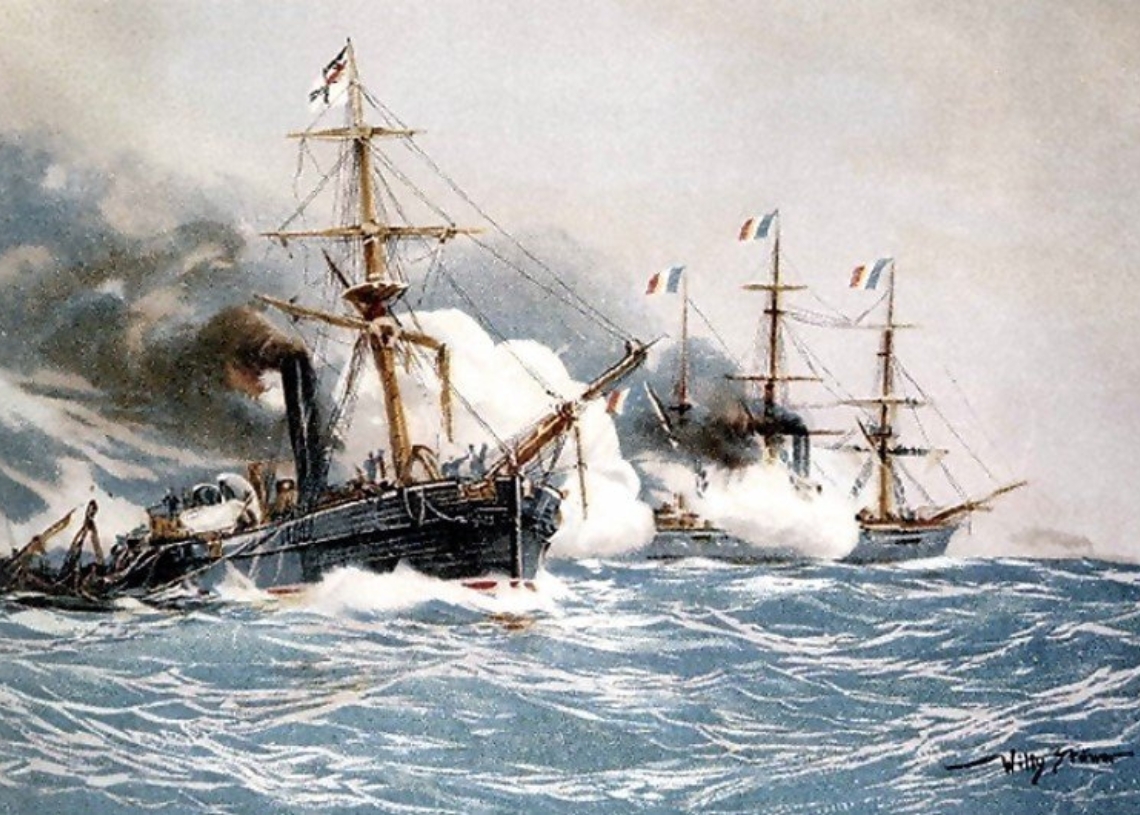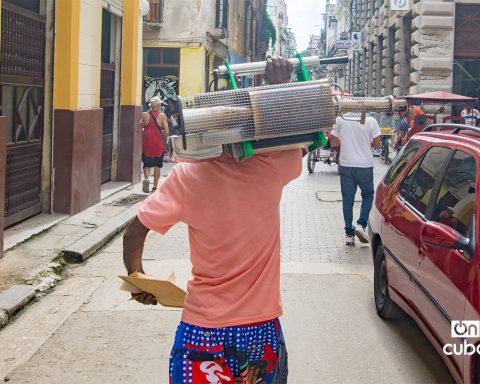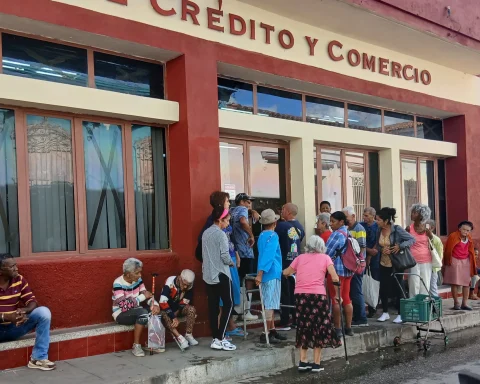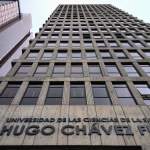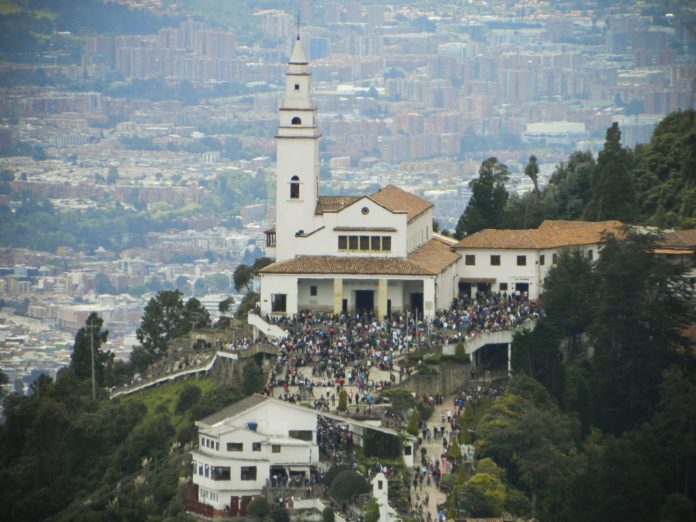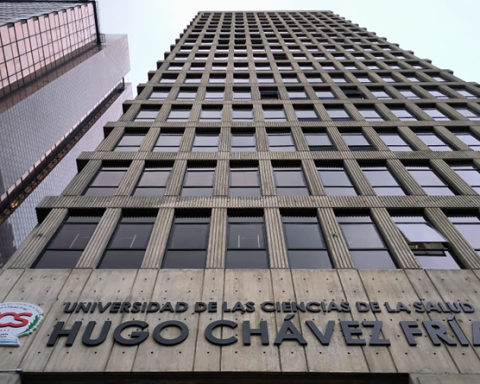For three days there was no talk of anything else. Driven by the winds of war, the deployment of the two rival ships was launched on November 9, 1870 on a gray theater, a winter sea. Hundreds of men were about to take two naves to their combat posts: warm drums spurred the spirits, the officers shouted orders to every lung, the infants put their weapons in point from the bow to the stern, the grumetes cleaned the covers the covers the covers the covers the covers the covers the covers , the gunners opened the scotters where the cannons threatened, while in the internal cabins the doctors and the carpenters prepared their instruments to take action.
It was an organized chaos. The hustle produced by hundreds of men running from one place to another on each ship was decreasing to the extent that the tasks ended. With everything ready, the bustle was finally replaced by silence. The one that precedes each challenge between old west gunmen. Only the wind was perceived by stirring the candles and flags in the masts, and the waves clicking on the sides of the vessels.
That afternoon, in front of Havana’s eyes of Havana, a unique duel between the German gunner meteor, under the command of the command, Kapitanleutnant Eduard von Knorr, and the French notice Bouvet, of which Frigate Alexandre Frangquet was chief. The meeting, with absurd trim and contradictory results, occurred within the framework of the Franco-Prussian war (1870-1871), which although it was prodigal in land battles could hardly see the Navy in action.

The conflict between the second French empire of Napoleon III and the Kingdom of Prussia of Bismarck was the most important in Europe after the Napoleonic wars and before the First World War. Thus, accidentally, to the distant Cuba CUPO the honor –If it can be said– of being an unusual battlefield for continental supremacy.
***
The drama began 72 hours before. At eight o’clock on Monday, November 7, 1870 from El Morro, the presence of the meteor was announced, which came from Nassau via Cayo Bone in search of coal. The German ship, 400 tons and 43 meters in length, brought 70 men on board and was equipped with three 15 and 12 centimeter cannons. Caprichally, an hour later, from Martinica he arrived on the same nautical avenue Bouvetlarger, with 800 tons, 80 crew members and similar battery: two 12 cm guns per band and one of 16 cm in colisa to bow. So immense was the sea, and the staunch enemies came to coincide on the Antillean map.
As ambassadors in the high seas of the growing hostilities between their nations, both endowments gave cordel to the rispideces of two lions stuck in a bottleneck. During November 8, the dark circles continued to climb until the respective consuls on the island and, throwing diplomacy for the board, captain, the Captain Franquet did not find a better way out than to fix the matter on the ground –or rather, in the ocean– of honor; So he challenged his Prussian couple. Von Knorr, without a cheek trembled, planted face and accepted the challenge.
Betting on a conciliation in these circumstances would have been an attack on dignity and courage, therefore, unforgivable imprudence, those involved will have thought. “The time of words has passed. May the cannons talk! ”They said with a punch on the table. The duel was agreed for the next day.
According to their animosity, that same noon the Gauls were the first to go to the ring. The international standards of the time decreed that for this type the belligerent ships had to wait for each other twenty -four hours after the first one left the port. Therefore, it corresponded to Prussia’s ship waiting in the bay.
After the wake of Bouvet The Spanish cannon came out Sentinelin charge of verifying that the combat will be made attached to the rules and outside its jurisdictional waters, and the steam Hernán Cortes, carrying as observers the Captain General Conde de Valmaseda, to the mayor of the Treasury, to the General Commander of the Navy, to the Civil Governor of Havana, in addition to distinguished and correspondent people from the national and foreign press, as described by one of the journalists themselves on board for The Crónica de Menorca (12/11/1870), Spanish newspaper General.
No one wanted to miss the show free that had ample advertising. “Thousands and thousands of people were betting on the roofs of the houses and the coast of the port, will Serene that splendid afternoon, according to a chronicler of the time [el de La Quincena, periódico fundado por Gonzalo de Castañón, publicado el 12 de noviembre de 1870]plethoric of light, life, of beauty … even on the coast of the Vedado were spectators, men, women and children, ”said the Havana historian Emilio Roig de Leushenring in a mechanuscript which can be consulted in the digital repository of the city’s historian’s office.
***
The afternoon of November 9 was stretched when, determined to battle, the little meteor left the bay in the northwest direction towards the agreed place. The Bouvet, who was waiting for him since the previous day Mar outside, imitated the advance putting his enemy. About 2:30, about six miles of land and separated from each other per mile and fourth, the ships raised their flags while the men grinded their fangs. In martial language, crews indicated that they were ready to measure forces.
The French warning broke fire. He managed to send several shots before the adversary responded his first download. At all times the Bouvet was seen shooting with greater cadence. The Commander Cranquet, one of the most expert and daring chiefs of the French Navy, ordered the German to the German band to throw it early; However, there was no effect. With an accurate rudder, the meteor got his railings.

In the rush, which was intended to practice an approach to the best style of the pirate fights of centuries, the infants on board unleashed a rifle and grenades storm. During the clash, a cannon bullet shattered the two major sticks of the Prussian ship and, for more fatality, the candles and strings in their collapse went to get tangled up with the propeller, hindering the march.
The meteor was thought to be sentenced. However, still disarboled, when the distances were extended, its modern artillery entered into operation. With a little fortune or playing the whole for the whole, the meteor managed to send a direct bomb to the heart of the Bouvet: the boiler. Suddenly the pipes and a steam jet flooded flooded the environment, unleashing a fire that could be immediately contained; But with the useless machine, the French ship saw its maneuvering capacity reduced.
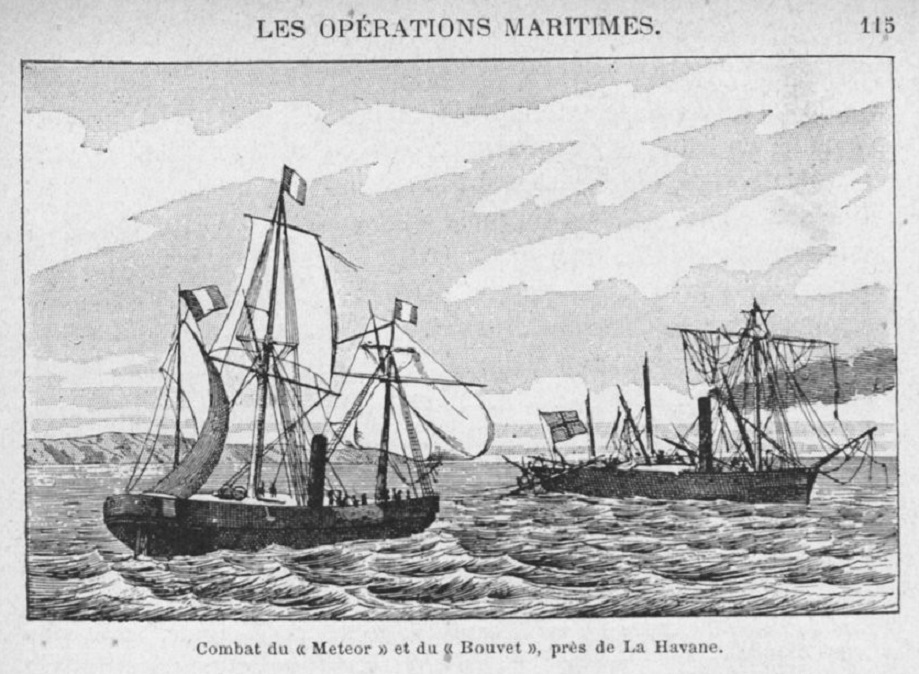
The Gallic Commander released the veins to recover mobility and suddenly decided to advance in demand of the port. At that point in the action, the meteor had managed to release his propeller and, since he did not present serious damage to the machine or in the helmet, he took the opportunity to cancel the injured opponent. Then the Hernán Cortés intervened with a warning flash, pointing to the Prussian gunman that the lawsuit was concluded. It was 3:05 in the afternoon.
***
Finally, the Bouvet would enter Havana, and half an hour later the meteor did it by its own engine. Upon his return, according to supporters, both endowments were received with acclamations and treated as winners. The spectators of Hernán Cortés would attest that both ships moved with skill and crossed shots of all caliber for more than 20 minutes. Although clearly it seemed a doubtful ending.
The damage balance revealed numerous breakdowns caused by projectile impacts on vessels. It is even said that the German remained in repairs in Havana until the middle of the following year. Because of their attitude in combat, commanders von Knorr and Cranquet were promoted in graduation, and it is pointing out that both would reach the end of their careers being admirals. Also, many subordinates received decorations.
As for the definitive balance of victims, there are discrepancies in the main documentary sources. Most of the records on the episode argue that the French part only had three injured: “On board the French warning, as we have assured, there were only two scalded men and one injured by a splinter. The three were taken last night to Garcini’s health house, ”says the testimony in The Crónica de Menorca. However, some hypotheses calculate that they could suffer up to ten casualties, between injured and dead, basically scalded. For example, I dropped it The Figaro In its edition of December 6, 1903: “[…] The French who as a result of the explosion of the boiler also had several dead, hidden proceeded to their burial. ”
What is demonstrated is that the Prussians lamented two dead by rifle bullet and chips in Granada. These were buried on Thursday 10 in the old sword cemetery with remarkable procession, and even Havanera Solidaria company celebrated a beneficial dinner to raise funds for enlightened families. Years later, his remains would be transferred to a vault in the Colon’s necropolis.
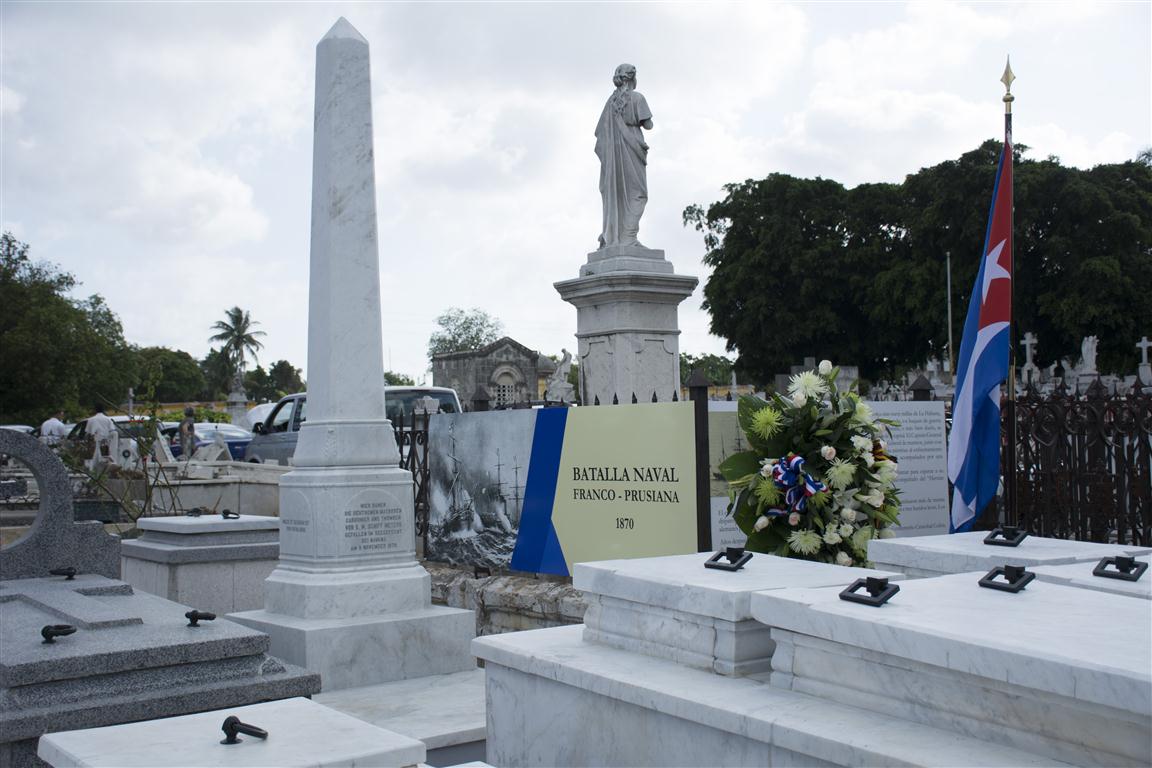
Photo: Taken from Havana Radio (online).
There today, in one of the foundational quadrants of the Camposanto, the marble registration at the foot of an Obelisk reveals the resting site of Marcos Matrosen Carbonnier and Tomas Von Thomsen, the two known fatalities of the Naval Duel. “That land where the little monument for the German community of Havana was erected was bought from the archbishopric by the General Consulate of Germany on August 14, 1884,” says Mr. Ricardo Díaz Murgas, a historical specialist of the institution.
In certification that time passed and new bilateral relations were consolidated, until that modest mausoleum arrive on time representatives of the diplomatic bodies of the German Federal Republic and the French government.
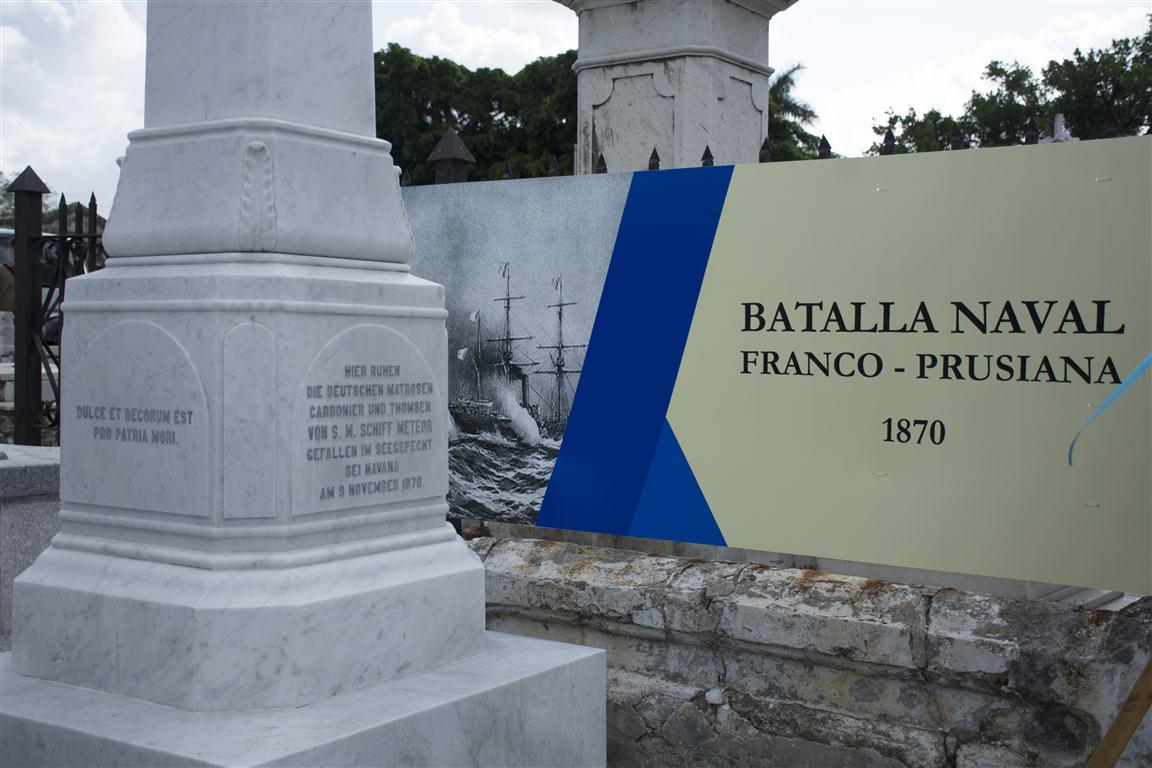
They deposit floral offerings in remembrance of the fallen and pronounce senses by noticing the danger of the internationalization of armed conflicts, in a humanist des Skown of destiny, in the epicenter of the Franco-Prussian war.
